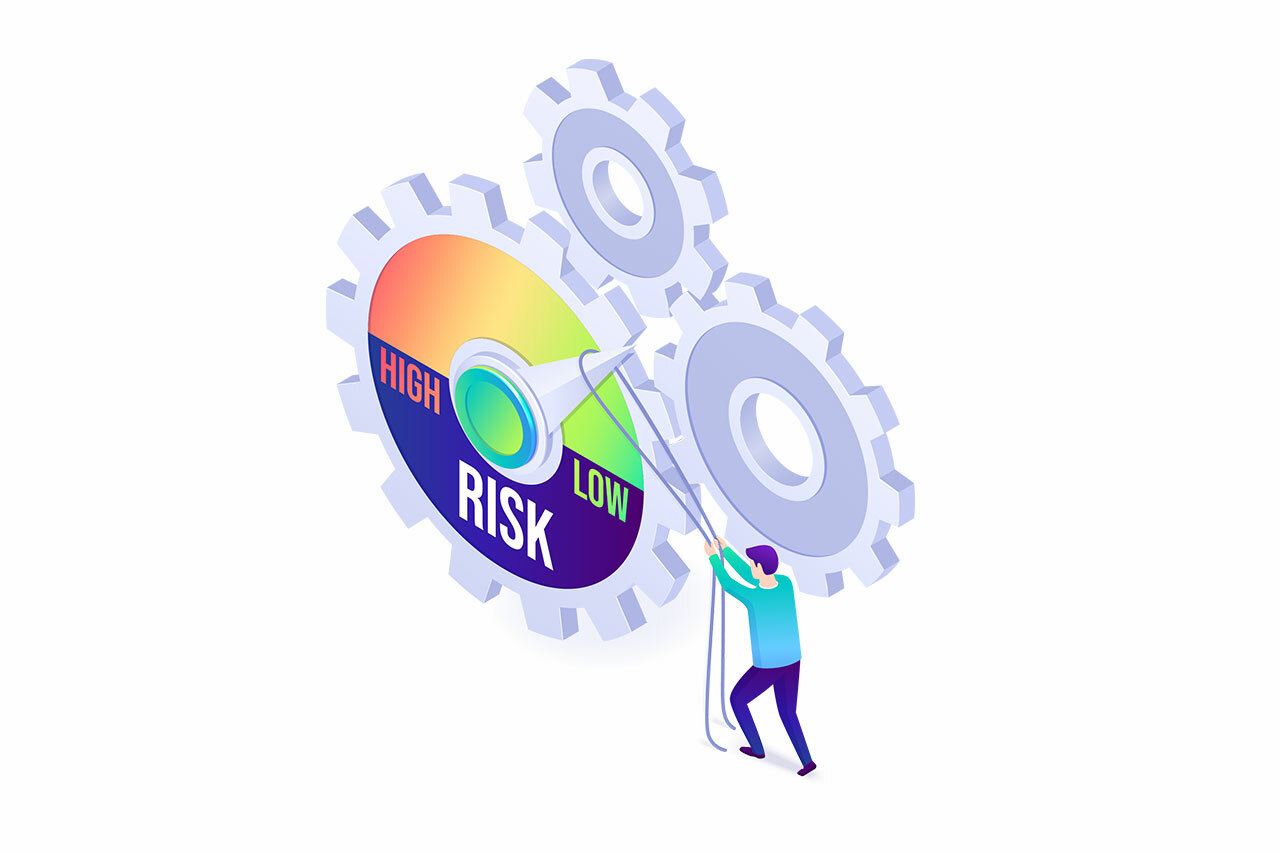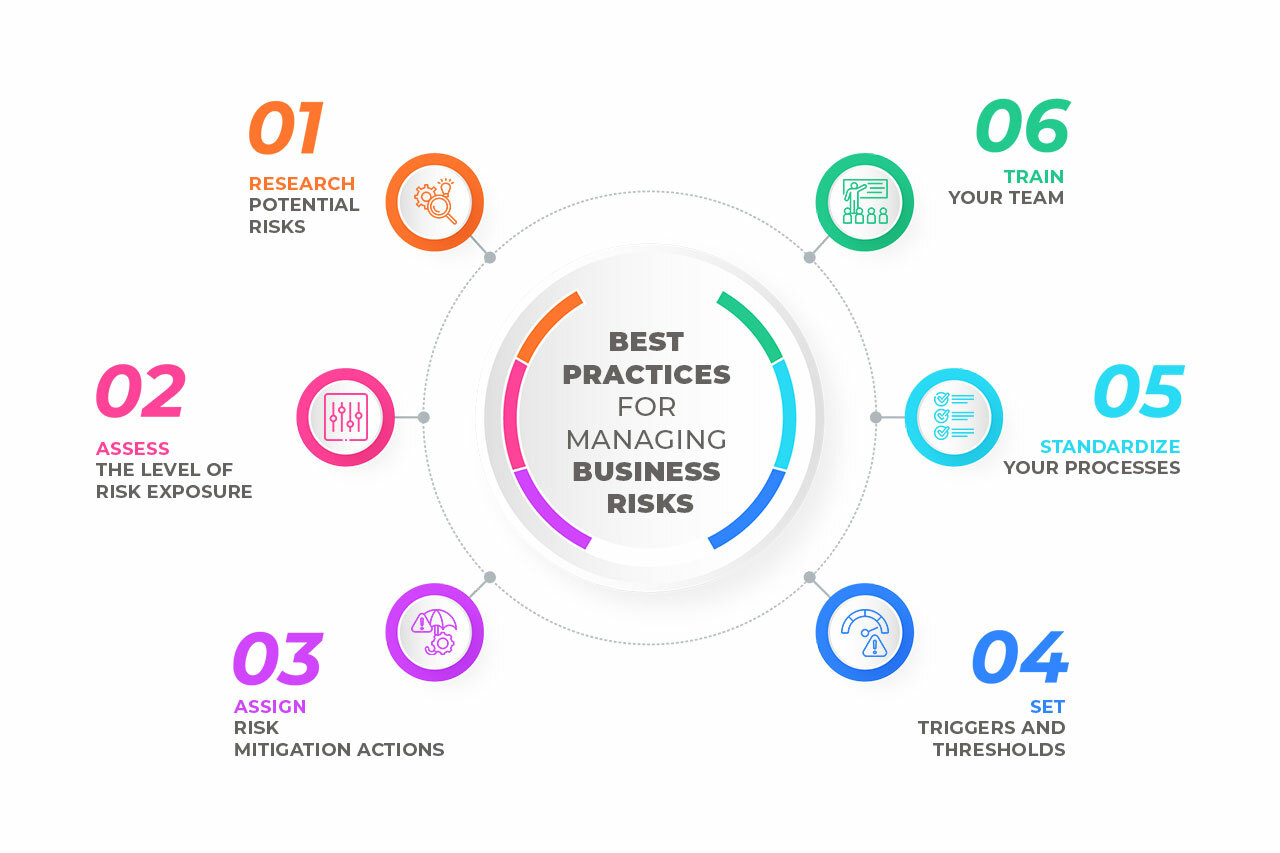Running a business comes with risks like compliance issues and supply chain disruptions, among others. When your focus is only on revenue generation and growth opportunities for your organization, these risks can become real problems, disrupt operations, and frustrate the growth of your business.
But guess what? You don’t have to spend extra time tightening up this end if you have the right process automation tool. With proper automation setups, you can eliminate disruptions, manage compliance issues, and quickly respond to other diverse threats while ensuring your business’s continued growth and success.
This blog discusses how automation tools can help you identify, assess, respond to, and mitigate business risks. You’ll learn how to reduce the chances of adverse events and ways to keep your business in good shape at all times. Let’s get started!
What is Risk Management Automation?

Risk management automation refers to using technology and automated processes to streamline and enhance the management of risks within an organization. It involves systematically identifying, assessing, monitoring, and mitigating different issues, including financial, operational, compliance, and strategic risks.
The primary objective of risk management automation is to provide immediate process visibility into both potential and existing risks, minimize errors, streamline processes, and enhance overall consistency and precision.
Why Should You Manage Business Risks with Automation Tools?

Managing business risk with automation tools offers numerous advantages. With the help of Artificial Intelligence, these tools analyze data patterns, identify potential issues promptly, and make predictive assessments.
Some specific advantages of using process automation tools in risk management include:
1. Comprehensive Audit Trail
Business process automation tools help to maintain meticulous records of high-risk business processes and risk management activities, forming a detailed audit trail. This audit trail becomes valuable for regulatory compliance checks as it provides documented evidence and shows due diligence. In other words, a process automation tool keeps you and your team on top of all compliance requirements and helps to adhere to compliance standards.
2. Enhanced Reporting
Process automation tools generate advanced reports and dashboards that offer a holistic view of your organization’s risk profile. These reports provide real-time insights and guide you in making data-driven decisions. Report dashboards help you understand your risk landscape, monitor changes, and develop effective risk mitigation strategies.
3. Accuracy
Business process automation tools strike out the need for extensive human involvement in risk management and are exceptional at reducing errors. When you automate routine processes such as data collection, risk assessment, and reporting, your chances of accuracy are higher.
With automation tools, you can assess risks using precise data and calculations. This inherent accuracy is critical for making dependable decisions on potential risks.
4. Consistency
Automation tools will help you implement risk management processes consistently across different departments within your organization. This means that all employees adhere to the same procedures regardless of who is involved or where they occur within the company. In a nutshell, automation helps reduce variability and ensure uniformity in risk management practices.
Best Practices for Managing Business Risks

Identifying and addressing risks early can prevent costly setbacks and ensure your organization stays resilient. Here are some best practices you can adopt for your risk management processes.
1. Research Potential Risks
To safeguard your operations, it’s essential to research intelligence data that highlights events that could pose harm to your business. This involves collecting data from both inside and outside your organization to fully understand potential risks.
To identify risks within your organization, you can use techniques like surveys, interviews, and internal databases to gather valuable information. Research outside your organization will combine resources, including industry studies and regulatory data, to spot common threats within the industry.
2. Assess the Level of Risk Exposure
After spotting risks, you need to figure out how serious they are and how likely they might happen. You can rank risks by severity, put them in categories, predict their reoccurrence, and how much they could affect your projects or plans.
This helps you decide which risks to deal with first and ensures you use your resources wisely to handle the most important risks.
3. Assign Risk Mitigation Actions
Once you’ve identified the most important risks, it’s time to plan how to deal with them. Plan and assign actions and roles to reduce or handle these critical risks. These actions should match your organization’s willingness to take risks and fit your long-term goals.
Make sure to specify who is responsible for each action and set deadlines for them. Keep an eye on the progress to ensure that the risks are being managed as planned. This way, you can effectively lower, transfer, or control the risks that could affect your organization.
4. Set Triggers and Thresholds
Stay on top of potential risks by setting up clear signals that tell you when an adverse event starts and thresholds that show when you need to take action.
Decide on the specific values for each risk category to figure out when it’s time to act. You can create alerts or signals to inform the right people when risks get too high or cross certain levels. Having these rules in place helps you respond quickly when risks show up.
5. Standardize Your Processes
Standardized processes help reduce the chances of errors and enhance the overall efficiency of your risk management plan.
Document the actions you take, timelines, and outcomes. This record is a valuable resource for future reference as it helps you see what worked and what didn’t and improves your risk management process.
When you have standardized processes, it’s easier for your team to respond to potential impacts in alignment with your business objectives. Standard procedures also help you comply with regulatory requirements.
If you’re looking to document and create standardized processes and need help on how to begin, book a call with one of our process automation consultants. We’ll help you streamline your risk management plan and enhance your business’s efficiency.
6. Train Your Team
Every time you set up a new risk management process, it’s essential to train those who would constantly manage it. This training makes your employees confident and helps them to proactively spot and tackle issues.
It not only equips your team with the skills and knowledge needed to navigate the complexities of risk management, but it also enhances the overall effectiveness of your risk management efforts.
Automation Tools That Can Help You Manage Business Risk

Automation tools help you to gather, analyze, and monitor data in real time, allowing for quicker and more accurate risk identification. In other words, they help in compliance management by ensuring that you consistently meet regulatory requirements. Workflow automation tools also help to assign and track risk mitigation tasks efficiently.
The most popular ones include:
While each of these tools has features and capabilities to effectively manage risks, we will delve into how you can use Pipefy, owing to its high level of customization and robust workflow management capabilities.
Key Pipefy Features to Help You Manage Business Risks

From tailored risk assessment templates to seamless collaboration and reporting, Pipefy has features to help you automate your risk management process, and here are a few:
1. Risk Management Template
Pipefy’s Risk Management Plan template can help you efficiently identify, assess, foresee, and mitigate risks. It comes with customizable forms that can help to gather information about various risk factors from employees. You can create a comprehensive risk inventory from these responses and ensure all potential threats are captured.
Pipefy’s template has features such as sending notifications or initiating predefined protocols that aid in creating proactive risk mitigation strategies. It ensures that your team can respond swiftly and effectively to potential threats.
Another standout feature of Pipefy’s Risk Management template is its Kanban board view. It divides your tasks into phases, providing a systematic approach to process management. With this template, your team can take specific actions at different phases and consistently follow procedures whenever they identify a risk.
The Kanban board offers end-to-end visualization of the entire process, from identifying issues to monitoring them once identified. This visual approach enhances clarity and ensures that nothing slips through the cracks.
Getting started with Pipefy’s Risk Management template is quick and simple. In your Pipefy account, click on Templates. You’ll get a templates gallery, and you can search for the Risk Management Template using the search bar.
You can deploy your risk management process within minutes. Being a low-code tool, Pipefy lets you make customizations without depending on IT support.
Other Pipefy templates you can use to automate different business processes and mitigate risks include Quality Control, Organizational Change Management, Supply Chain Management, and Financial Risk Management templates. You can use these templates as they are, customize them to suit your needs, or create a template from scratch.
2. Workflow Automation
Manually handling tasks are time-consuming and error-prone. Pipefy’s workflow automation tool will not only manage risks effectively but also free up valuable time to craft more strategic activities.
For instance, with Pipefy’s Supply Chain Management Template, you can create a comprehensive supply chain workflow that includes everything from purchasing raw materials and transportation to the arrival of the materials.
You will have all you need to manage your supply and demand plan, including supplier information, key details about order fulfillment, and storage of products. You can also set up a team that tracks your supply chain closely by adding process owners and setting up triggers in your workflow.
If there’s a supply chain disruption, such as a delivery delay, Pipefy can automatically alert your procurement team. This can help you identify alternative sources and initiate contingency plans.
3. Communication
Pipefy enhances organizational communication by providing a centralized platform for risk-related activities. Whether reporting a risk, evaluating its impact, or documenting mitigation efforts, Pipefy keeps all process owners on the same page.
4. Analytics and Reporting
Pipefy’s robust analytics and reporting dashboards can help you customize reports and charts. You’ll be able to visualize your risk appetite, tolerance, exposure rates, control incidents, areas involved in risk assessment, and any other metrics that are critical to your business.
Final Thoughts
Automating your risk management process will make it easier for you to track all the risks your business is exposed to. With Pipefy’s advanced features, you can seamlessly assess risks and mitigate and monitor them with a single, cohesive workflow. This results in proactive risk management and informed decision-making for you and your team.
If you are looking to work with a team of experts who can help you avoid compliance issues within your team, minimize business risks, and ensure your employees stick to your risk management processes at all times, schedule a free call with one of our business process consultants today. We’ll discuss your concerns, share expert opinions on the steps to take, and help you set the ball rolling.


